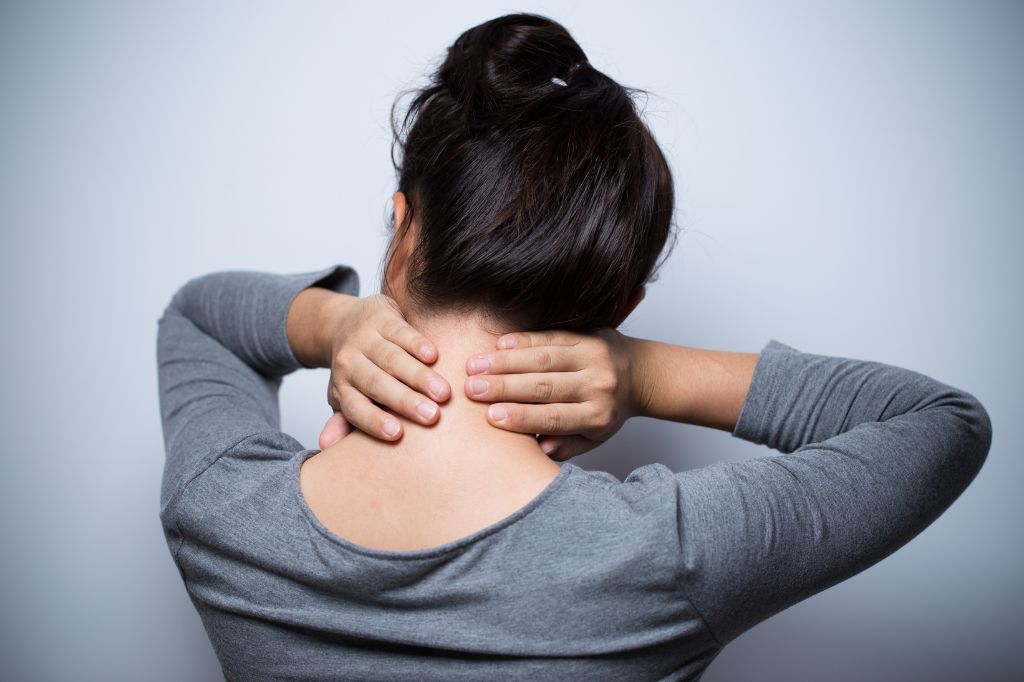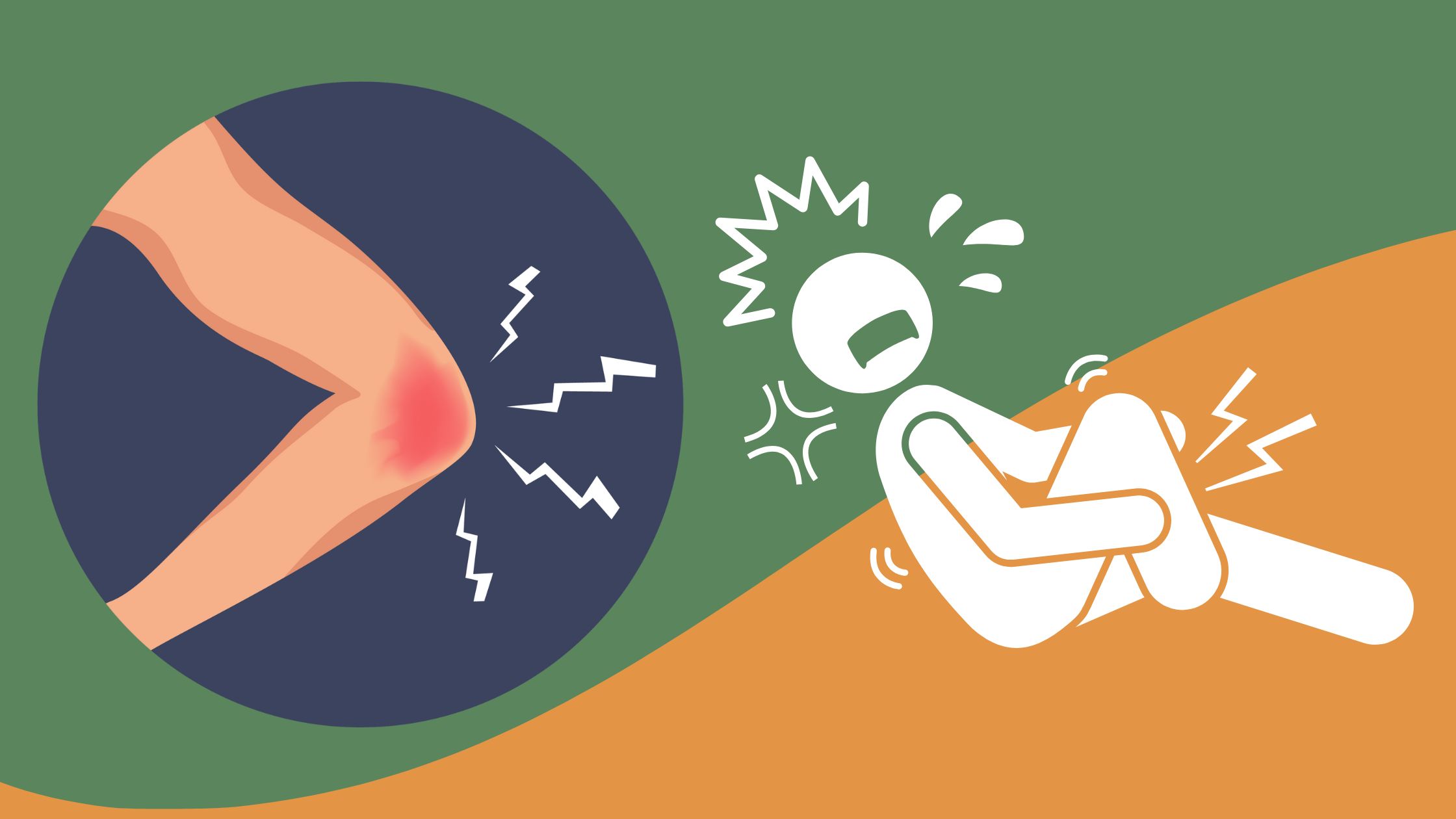What Causes Neck and Shoulder Pain?
You may not realize it, but your neck and shoulders are constantly in use.
Whether you’re sitting at a desk all day, carrying heavy bags, or even just talking on the phone, your neck, and shoulders are working hard to support your head.
This means that neck and shoulder pain is a very common problem.
In fact, it’s estimated that as many as 70% of people will experience neck pain at some point in their lives. (1)
This pain can range from mild to severe, and it can be short-term or chronic.
But…
What causes neck and shoulder pain?
There are actually many different things that can contribute to this type of pain.
Some of the most common causes of neck and shoulder pain include:
1. Sleeping in an awkward position

Most of us have experienced neck pain after sleeping in an uncomfortable position.
People can get neck and shoulder pain when they sleep in an awkward position.
This might be because they slept on their stomach and now have a crick in their neck or because they slept on their side with their head unsupported.
2. Poor posture
One common cause of neck and shoulder pain is poor posture.
When you sit or stand in a slouched position, it puts unnecessary strain on the muscles and ligaments in your neck and shoulders.
This can lead to pain and stiffness.
Maintaining good posture is important for preventing neck and shoulder pain.
3. Carrying a shoulder bag
Heavy purses, backpacks, and shoulder bags can put a strain on the nerves and muscles in your neck and shoulders.
This can lead to pain, numbness, or tingling in the affected area.
4. Persistent stress
Persistent stress can also lead to neck and shoulder pain.
Why?
Because when you’re stressed, your body goes into “fight or flight” mode.
This causes your muscles to tense up, which can lead to pain, stiffness, and even headaches.
5. Pinched nerves

You probably know the feeling well — when you turn your head one way and get a sudden, sharp pain in your neck or shoulder.
This is often caused by a pinched nerve, which happens when the nerve is compressed or irritated.
Pinched nerves can be caused by a number of things, including poor posture, repetitive motions, and injuries.
If you have a pinched nerve, you may feel pain, tingling, or numbness in the affected area.
6. Rotator cuff tear
A rotator cuff tear is a common cause of shoulder pain.
This is when the tendons or muscles in the shoulder are torn.
This can happen due to an injury or overuse.
If you have a rotator cuff tear, you may feel pain, stiffness, or weakness in your shoulder.
7. Cervical spondylosis
Cervical spondylosis is a condition that affects the spine, and it’s one of the most common causes of neck pain, especially in older adults.
It happens when the discs in the spine break down and become thinner.
This can lead to pain, stiffness, and loss of mobility in the neck.
Other common symptoms of cervical spondylosis include headaches, muscle weakness, and tingling or numbness in the arms. (2)
8 Whiplash
Whiplash is a neck injury that occurs when the head is suddenly and forcefully jerked forward or backward.
It can cause neck pain and stiffness, as well as headaches, shoulder pain, and dizziness.
Whiplash is most often caused by car accidents but can also be caused by falls, sports injuries, and other forms of trauma.
If you think you may have whiplash, it is important to see a doctor right away so that you can receive treatment and prevent further injury.
9. An injury
A neck or shoulder injury can cause pain and stiffness.
In some cases, the pain may be sharp and localized to the injured area.
In other cases, the pain may be more diffuse and radiate to other parts of the body.
10. Heart attacks
Although neck and shoulder pain is most often due to a less serious condition, it can sometimes be a sign of a heart attack.
If you are experiencing neck or shoulder pain, shortness of breath, sweating, chest pain, or nausea, it is important to call 911 right away.
These may be signs of a heart attack, and you should get medical help immediately.
11. Bursitis
Bursitis is a condition that causes inflammation of the bursae.
The bursae are small, fluid-filled sacs that act as cushions between the bones, tendons, and muscles.
Bursitis can occur in any joint in the body but is most common in the shoulder, elbow, and hip.
Symptoms of bursitis include pain, stiffness, swelling, and redness.
Bursitis is often caused by overuse or repetitive motions.
It can also be caused by an injury or infection.
How you can ease neck pain and shoulder yourself
1. Apply ice or heat
Applying ice or heat to the affected area can help reduce pain and inflammation.
Ice should be applied for 20-30 minutes at a time, and heat should be applied for 30-60 minutes at a time.
Do not apply ice or heat directly to the skin — wrap it in a towel first.
2. Take over-the-counter pain medication
If you are experiencing pain, you can take over-the-counter pain medication such as ibuprofen or acetaminophen.
Be sure to follow the instructions on the packaging.
Do not take more medication than recommended.
3. Do gentle stretches and exercises
Stretching and exercise can help improve the range of motion and decrease pain.
Some simple exercises and stretches that can be done at home include:
- Neck stretches: Tilt your head to the side, then slowly bring it back to the center. Repeat on the other side.
- Shoulder stretches: Reach your arm across your body and grab your shoulder. Gently pull your arm across your body until you feel a stretch. Repeat on the other side.
- Arm circles: Stand with your feet shoulder-width apart and your arms at your sides. Slowly lift your arms out to the sides and make small circles.
4. Use good posture
Maintaining good posture can help reduce neck and shoulder pain.
When sitting, be sure to keep your back straight, and your shoulders relaxed.
When standing, keep your weight evenly distributed on both feet.
Avoid slouching or hunching over.
5. Sleep in a comfortable position
Sleeping in a comfortable position can help reduce neck and shoulder pain.
If you sleep on your side, place a pillow between your knees.
If you sleep on your back, place a pillow under your knees.
Be sure to use a firm mattress and adjust your pillows so that your head and neck are in a neutral position.
6. Take breaks throughout the day
If you have a desk job or spend a lot of time sitting, it is important to take breaks throughout the day.
Get up and walk around for a few minutes every hour or so.
If possible, try to avoid sitting in the same position for more than 30 minutes at a time.
7. See your doctor
If home treatment does not relieve your pain, or if your pain is severe, it is important to see your doctor.
Your doctor can diagnose the cause of your pain and recommend treatment options.
They may also refer you to a physical therapist or other specialists.
Further reading: 8 Possible Causes of Neck Pain on the Left Side






